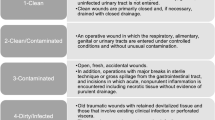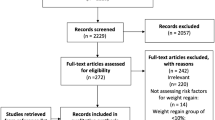Abstract
It has been suggested that total cholesterol levels and the use of statin medications are associated with the incidence of complications after gastrointestinal surgery. The aim of this study was to determine if preoperative total cholesterol levels are associated with a higher risk of postoperative infections and mortality. A total of 2211 patients undergoing general surgical procedures between December 2006 and November 2008 at Iizuka Hospital and between January 2010 and March 2012 at Jichi Medical University Hospital were reviewed. Multiple logistic regression models were used to evaluate serum total cholesterol and other variables as predictors of postoperative nosocomial infections. Serum total cholesterol concentrations lower than 160 mg/dl were associated with an increased incidence of superficial and deep incisional surgical site infections. Serum total cholesterol levels showed a reverse J-shaped relationship with the development of organ space surgical site infection and pneumonia. There was no discernible effect of serum cholesterol levels on the postoperative mortality observed in this cohort of patients. Decreased serum albumin was one of the strongest risk factors for the development of nosocomial infection after surgery. Postoperative pneumonia was not observed in patients taking statin medications whose cholesterol levels were <200 mg/dl. Serum total cholesterol may be a valid predictor of surgical outcome. Preoperative statin use may affect the development of postoperative pneumonia in patients with total cholesterol levels below 200 mg/dl.


Similar content being viewed by others
References
Jacobs D, Blackburn H, Higgins M, Reed D, Iso H, McMillan G et al (1992) Report of the conference on low blood cholesterol: mortality associations. Circulation 86:1046–1060
Iribarren C, Jacobs DR Jr, Sidney S, Claxton AJ, Feingold KR (1998) Cohort study of serum total cholesterol and in-hospital incidence of infectious diseases. Epidemiol Infect 121:335–347
Bonville DA, Parker TS, Levine DM, Gordon BR, Hydo LJ, Eachempati SR (2004) The relationships of hypocholesterolemia to cytokine concentrations and mortality in critically ill patients with systemic inflammatory response syndrome. Surg Infect 5:39–49
Tobias PS, McAdam KP, Soldau K, Ulevitch RJ (1985) Control of lipopolysaccharide-high-density lipoprotein interactions by an acute-phase reactant in human serum. Infect Immun 50:73–76
Casas AT, Hubsch AP, Rogers BC, Doran JE (1995) Reconstituted high-density lipoprotein reduces LPS-stimulated TNF alpha. J Surg Res 59:544–552
Casa AT, Hubsch AP, Doran JE (1996) Effects of reconstituted high-density lipoprotein in persistent gram-negative bacteremia. Am Surg 62:350–355
Pajkrt D, Doran JE, Koster F, Lerch PG, Arnet B, van der Poll T et al (1996) Antiinflammatory effects of reconstituted high-density lipoprotein during human endotoxemia. J Exp Med 184:1601–1608
Galbois A, Thabut D, Tazi KA, Rudler M, Mohammadi MS, Bonnefont-Rousselot D et al (2009) Ex vivo effects of high-density lipoprotein exposure on the lipopolysaccharide-induced inflammatory response in patients with severe cirrhosis. Hepatology 49:175–184
Harris HW, Grunfeld C, Feingold KR, Rapp JH (1990) Human very low density lipoproteins and chylomicrons can protect against endotoxin-induced death in mice. J Clin Invest 86:696–702
Rauchhaus M, Coats AJ, Anker SD (2000) The endotoxin-lipoprotein hypothesis. Lancet 356:930–933
Schvartz YSH, Polyakov LM, Dushkin MI (2008) Modification and clearance of low density lipoproteins during the formation of endotoxin-lipoprotein complexes. Exp Biol Med 145:430–432
Navab M, Hough GP, Van Lenten BJ, Berliner JA, Fogelman AM (1988) Low density lipoproteins transfer bacterial lipopolysaccharides across endothelial monolayers in a biologically active form. J Clin Invest 81:601–605
Sørensen LT, Hemmingsen U, Kallehave F, Wille-Jørgensen P, Kjaergaard J, Møller LN et al (2005) Risk factors for tissue and wound complications in gastrointestinal surgery. Ann Surg 241:654–658
Sørensen LT, Hemmingsen U, Kallehave F, Wille-Jørgensen P, Kjaergaard J, Møller LN (1988) CDC definitions for nosocomial infections. Am J Infect Control 16:128–140
Mangram AJ, Horan TC, Pearson ML, Silver LC, Jarvis WR, Hospital Infection Control Practices Advisory Committee (1999) Guideline for prevention of surgical site infection. Infect Control Hosp Epidemiol 20:250–278
Delgado-Rodríguez M, Medina-Cuadros M, Gómez-Ortega A, Martínez-Gallego G, Mariscal-Ortiz M, Martinez-Gonzalez MA (2002) Cholesterol and serum albumin levels as predictors of cross infection, death, and length of hospital stay. Arch Surg 137:805–812
Delgado-Rodríguez M, Medina-Cuadros M, Martínez-Gallego G, Sillero-Arenas M (1997) Total cholesterol, HDL-cholesterol, and risk of nosocomial infection: a prospective study in surgical patients. Infect Control Hosp Epidemiol 18:9–18
Canturk NZ, Canturk Z, Okay E, Yirmibesoglu O, Eraldemir B (2002) Risk of nosocomial infections and effects of total cholesterol, HDL cholesterol in surgical patients. Clin Nutr 21:431–6
Hu J, Zhang Z, Shen WJ, Azhar S (2010) Cellular cholesterol delivery, intracellular processing and utilization for biosynthesis of steroid hormones. Nutr Metab 1:47
Kraemer FB (2007) Adrenal cholesterol utilization. Mol Cell Endocrinol 265–266: 42–5
Vermont CL, den Brinker M, Kâkeci N, de Kleijn ED, de Rijke YB, Joosten KF et al (2005) Serum lipids and disease severity in children with severe meningococcal sepsis. Crit Care Med 33:1610–1615
Ravnskov U (2003) High cholesterol may protect against infections and atherosclerosis. QJ Med 96:927–934
Hennessey DB, Burke JP, Ni-Dhonochu T, Shields C, Winter DC, Mealy K (2010) Preoperative hypoalbuminemia is an independent risk factor for the development of surgical site infection following gastrointestinal surgery. Ann Surg 22:325–329
Griffin SM, Shaw IH, Dresner SM (2002) Early complications after Ivor Lewis subtotal esophagectomy with two field lymphadenectomy: risk factors and management. J Am Coll Surg 194:285–297
Ando N, Ozawa S, Kitagawa Y, Shinozawa Y, Kitajima M (2003) Improvement in the results of surgical treatment of advanced squamous esophageal carcinoma during 15 consecutive years. Ann Surg 232:225–32
Auerbach I, Behar S, Motro M (1997) The effect of pravastatin on coronary events after myocardial infarction. N Engl J Med 336:962
Shepherd J, Cobbe SM, Ford I, Isles CG, Lorimer AR, MacFarlane PW (1995) Prevention of coronary heart disease with pravastatin in men with hypercholesterolemia. West of Scotland Coronary Prevention Study Group. N Engl J Med 333:1301–1307
Landmesser U, Bahlmann F, Mueller M, Spiekermann S, Kirchhoff N, Schulz S et al (2005) Simvastatin versus ezetimibe: pleiotropic and lipid-lowering effects on endothelial function in humans. Circulation 111:2356–2363
Hackam DG, Mamdani M, Li P, Redelmeier DA (2006) Statins and sepsis in patients with cardiovascular disease: a population-based cohort analyses. Lancet 367:413–418
Wong SL1, Revels SL, Yin H, Stewart AK, McVeigh A, Banerjee M, et al (2015) Variation in hospital mortality rates with inpatient cancer surgery. Ann Surg. 261: 632–636
Conflict of Interest
Mitsuaki Morimoto and the other coauthors have no conflicts of interest.
Author information
Authors and Affiliations
Corresponding author
Rights and permissions
About this article
Cite this article
Morimoto, M., Nakamura, Y., Yasuda, Y. et al. Serum Total Cholesterol Levels Would Predict Nosocomial Infections After Gastrointestinal Surgery. Indian J Surg 77, 283–289 (2015). https://doi.org/10.1007/s12262-015-1296-6
Received:
Accepted:
Published:
Issue Date:
DOI: https://doi.org/10.1007/s12262-015-1296-6




